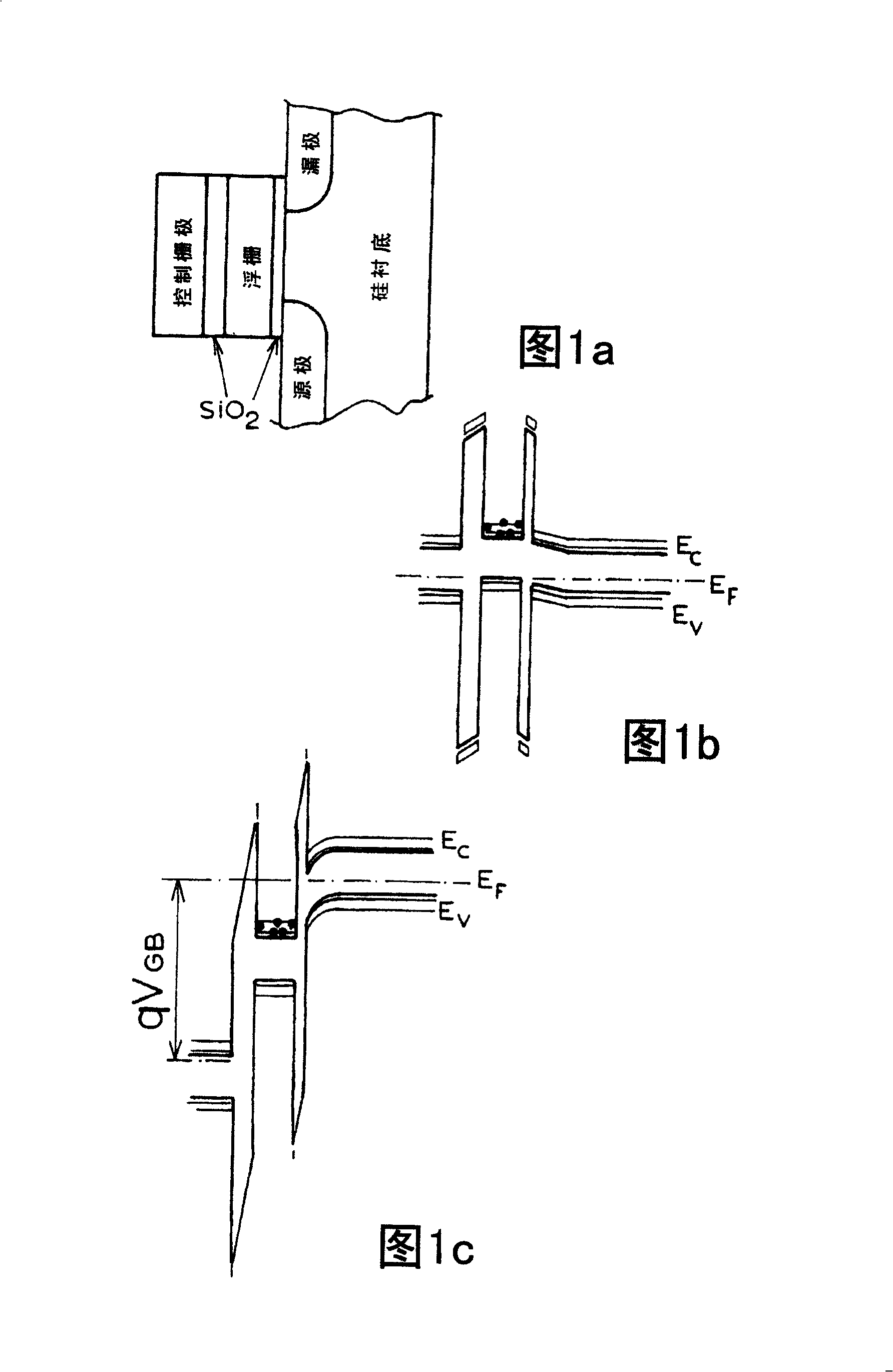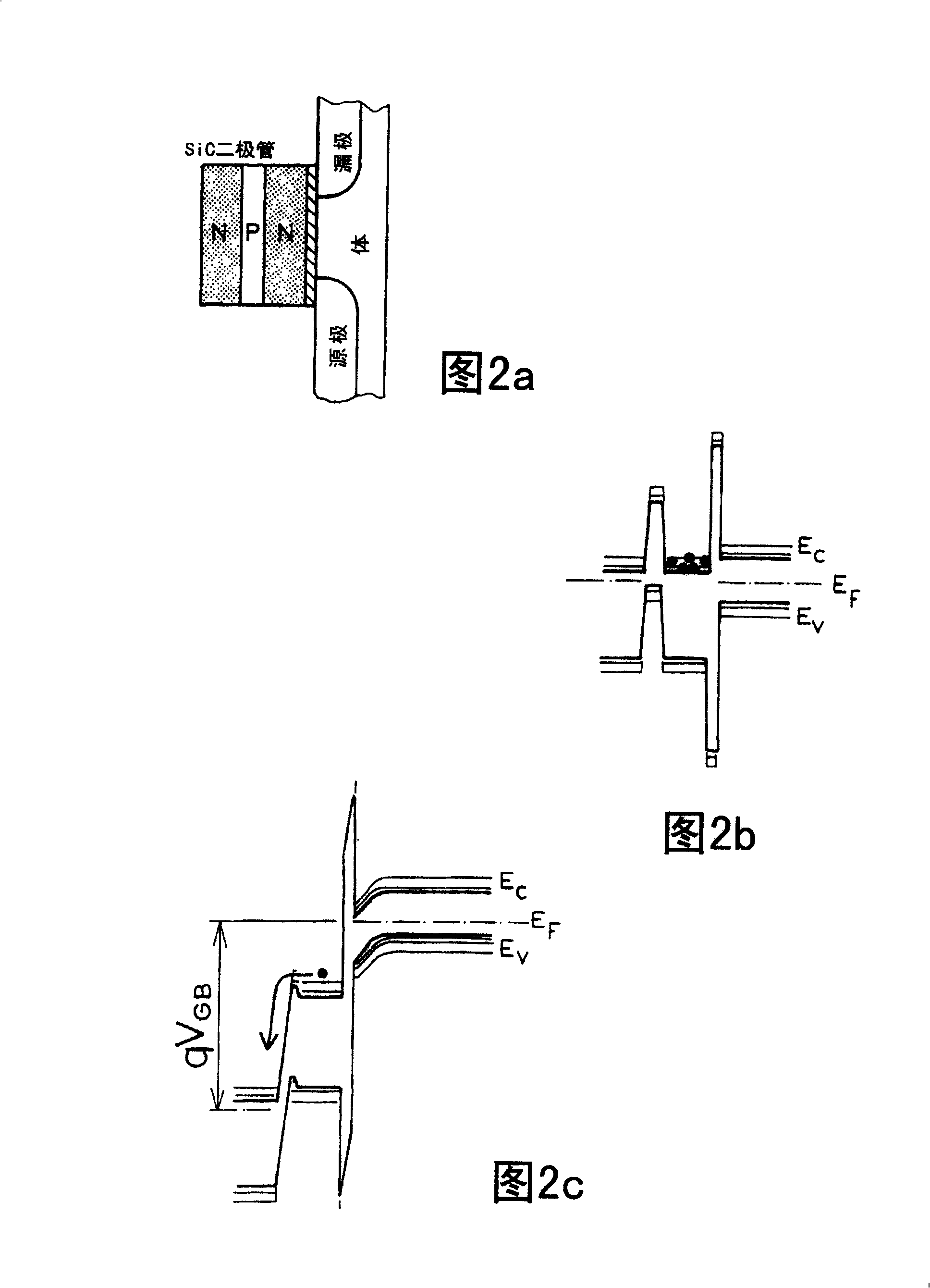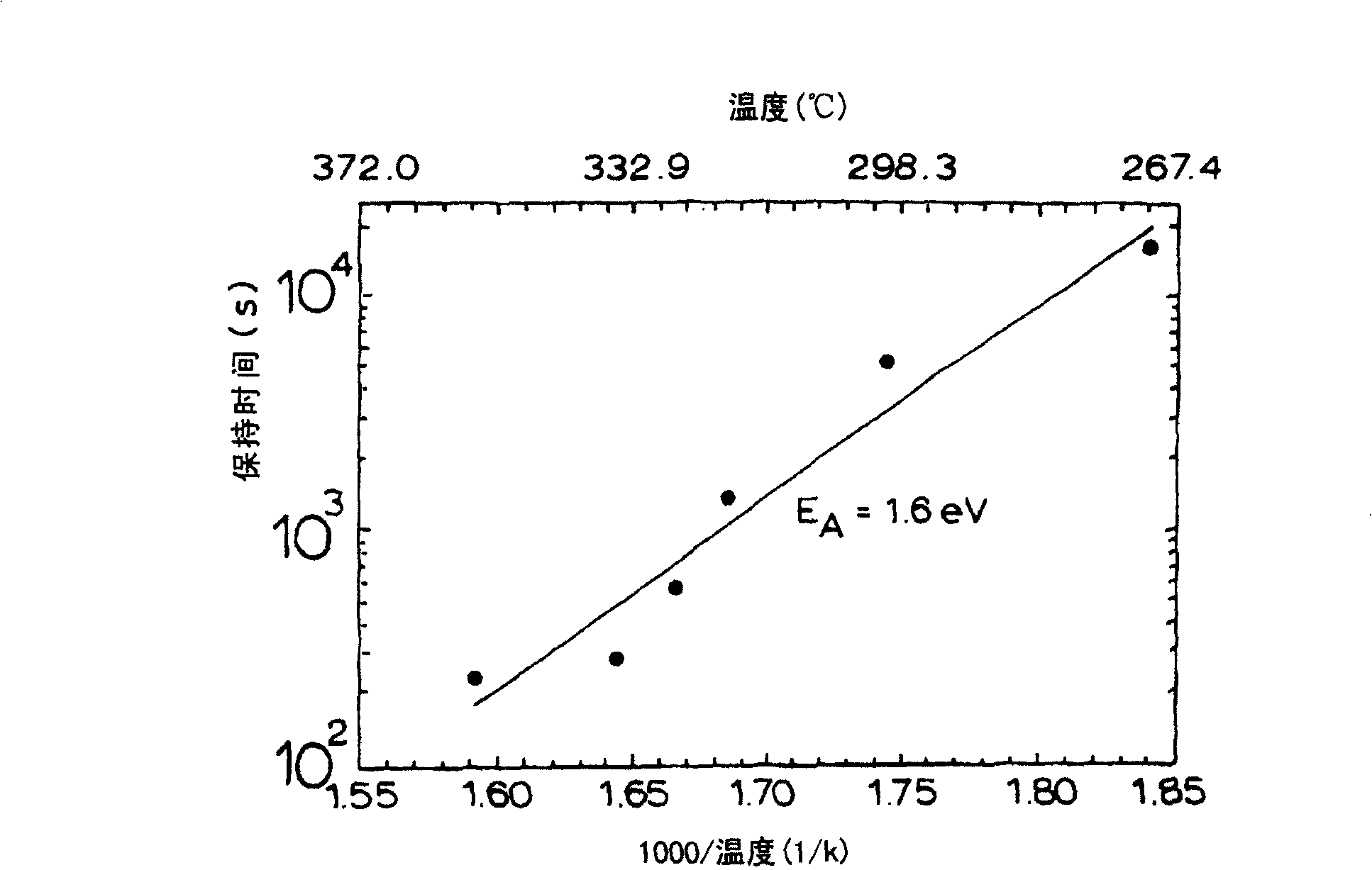Memory cell
A technology for accessing memory and transistor units, which is applied in the field of non-volatile memory units, can solve problems such as increasing the density of storage devices, and achieve the effect of high storage capacity
- Summary
- Abstract
- Description
- Claims
- Application Information
AI Technical Summary
Problems solved by technology
Method used
Image
Examples
Embodiment Construction
[0068] 1T unit with diode isolation
[0069] Such units are preferred embodiments of the invention. The difference to the capacitor isolation 1T cell used in modern flash memory can be stated simply as follows: The capacitor between the floating gate and the control gate is replaced with a SiC diode.
[0070] Figure 1 shows the cross section and energy band diagram of a capacitor isolated 1T cell. The case of zero voltage between the control gate and the body of the MOSFET (Fig. 1b) shows that electrons are trapped in the potential well created by the floating gate and the surrounding gate dielectric. This allows long charge retention times, since even unbalanced charges cannot escape the high potential barrier created by the capacitor dielectric on both sides. The case of a positive voltage applied to the control gate (Fig. 1c) shows no change in the barrier height between the floating gate and the dielectric of either capacitor. This causes problems in terms of charge r...
PUM
 Login to view more
Login to view more Abstract
Description
Claims
Application Information
 Login to view more
Login to view more - R&D Engineer
- R&D Manager
- IP Professional
- Industry Leading Data Capabilities
- Powerful AI technology
- Patent DNA Extraction
Browse by: Latest US Patents, China's latest patents, Technical Efficacy Thesaurus, Application Domain, Technology Topic.
© 2024 PatSnap. All rights reserved.Legal|Privacy policy|Modern Slavery Act Transparency Statement|Sitemap



